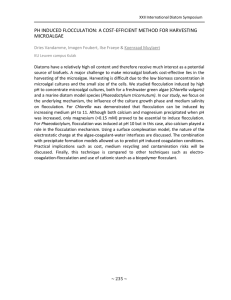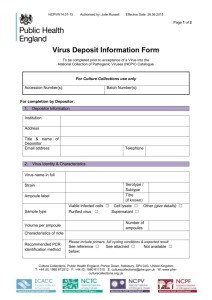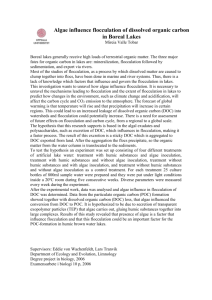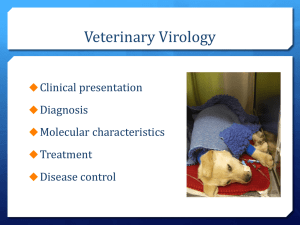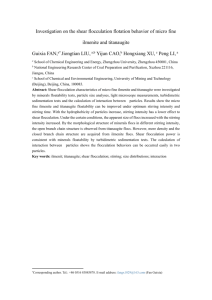Organic flocculation: - irceb at asu
advertisement
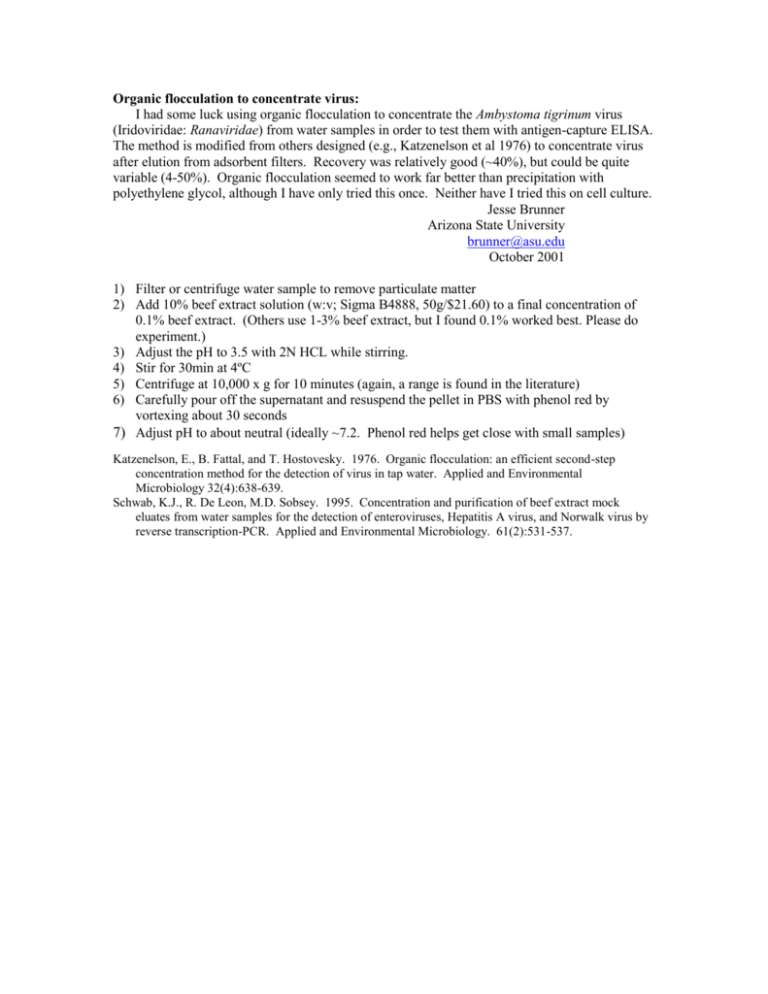
Organic flocculation to concentrate virus: I had some luck using organic flocculation to concentrate the Ambystoma tigrinum virus (Iridoviridae: Ranaviridae) from water samples in order to test them with antigen-capture ELISA. The method is modified from others designed (e.g., Katzenelson et al 1976) to concentrate virus after elution from adsorbent filters. Recovery was relatively good (~40%), but could be quite variable (4-50%). Organic flocculation seemed to work far better than precipitation with polyethylene glycol, although I have only tried this once. Neither have I tried this on cell culture. Jesse Brunner Arizona State University brunner@asu.edu October 2001 1) Filter or centrifuge water sample to remove particulate matter 2) Add 10% beef extract solution (w:v; Sigma B4888, 50g/$21.60) to a final concentration of 0.1% beef extract. (Others use 1-3% beef extract, but I found 0.1% worked best. Please do experiment.) 3) Adjust the pH to 3.5 with 2N HCL while stirring. 4) Stir for 30min at 4ºC 5) Centrifuge at 10,000 x g for 10 minutes (again, a range is found in the literature) 6) Carefully pour off the supernatant and resuspend the pellet in PBS with phenol red by vortexing about 30 seconds 7) Adjust pH to about neutral (ideally ~7.2. Phenol red helps get close with small samples) Katzenelson, E., B. Fattal, and T. Hostovesky. 1976. Organic flocculation: an efficient second-step concentration method for the detection of virus in tap water. Applied and Environmental Microbiology 32(4):638-639. Schwab, K.J., R. De Leon, M.D. Sobsey. 1995. Concentration and purification of beef extract mock eluates from water samples for the detection of enteroviruses, Hepatitis A virus, and Norwalk virus by reverse transcription-PCR. Applied and Environmental Microbiology. 61(2):531-537.

